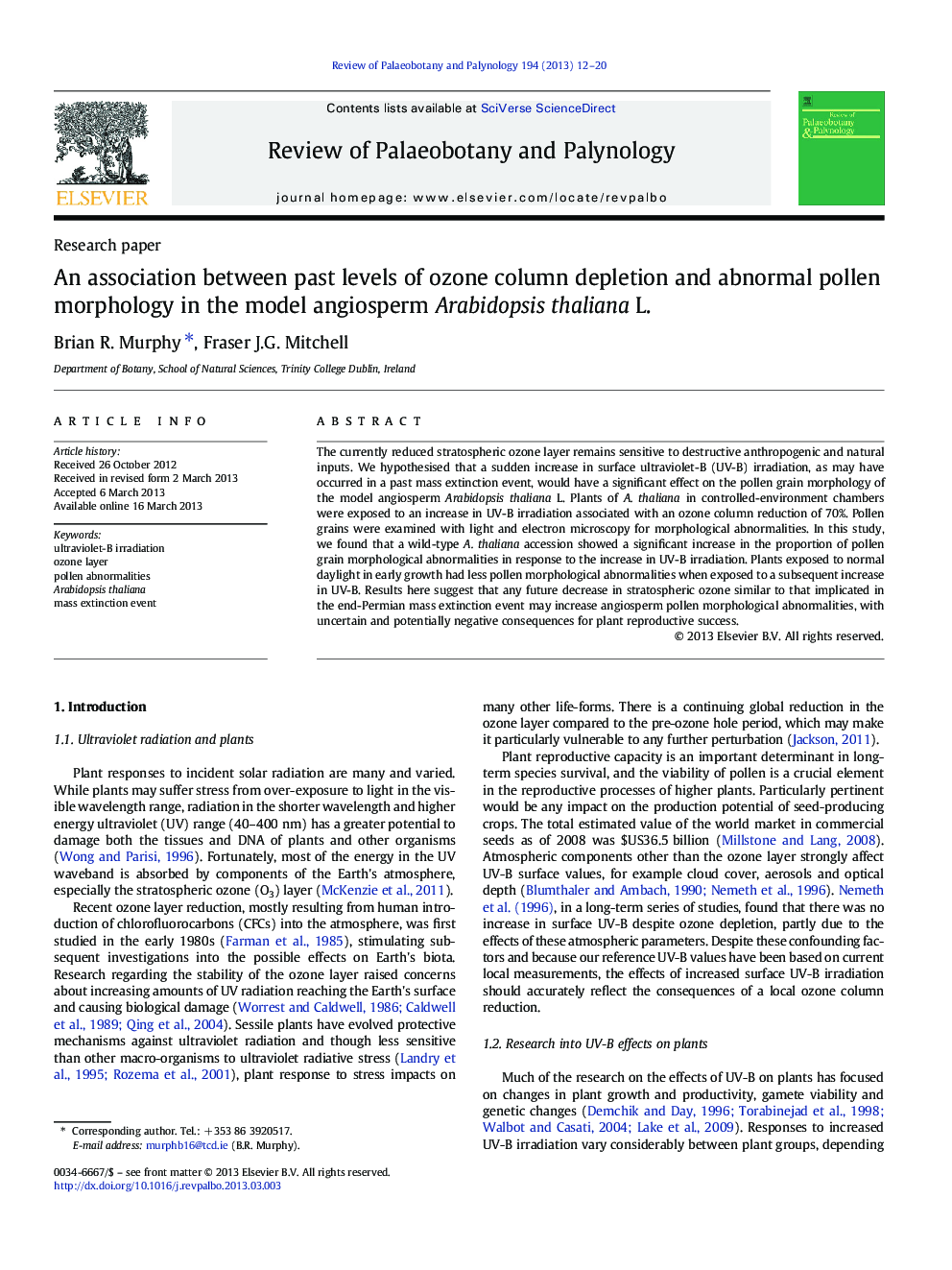| Article ID | Journal | Published Year | Pages | File Type |
|---|---|---|---|---|
| 4750297 | Review of Palaeobotany and Palynology | 2013 | 9 Pages |
•Increased ultraviolet-B exposure was positively related to pollen abnormalities.•Plants grown in artificial light may be more sensitive to ultraviolet-B radiation.•End-Permian ozone levels may have increased angiosperm pollen abnormalities.•Future catastrophic ozone column depletion may impact plant reproductive success.
The currently reduced stratospheric ozone layer remains sensitive to destructive anthropogenic and natural inputs. We hypothesised that a sudden increase in surface ultraviolet-B (UV-B) irradiation, as may have occurred in a past mass extinction event, would have a significant effect on the pollen grain morphology of the model angiosperm Arabidopsis thaliana L. Plants of A. thaliana in controlled-environment chambers were exposed to an increase in UV-B irradiation associated with an ozone column reduction of 70%. Pollen grains were examined with light and electron microscopy for morphological abnormalities. In this study, we found that a wild-type A. thaliana accession showed a significant increase in the proportion of pollen grain morphological abnormalities in response to the increase in UV-B irradiation. Plants exposed to normal daylight in early growth had less pollen morphological abnormalities when exposed to a subsequent increase in UV-B. Results here suggest that any future decrease in stratospheric ozone similar to that implicated in the end-Permian mass extinction event may increase angiosperm pollen morphological abnormalities, with uncertain and potentially negative consequences for plant reproductive success.
